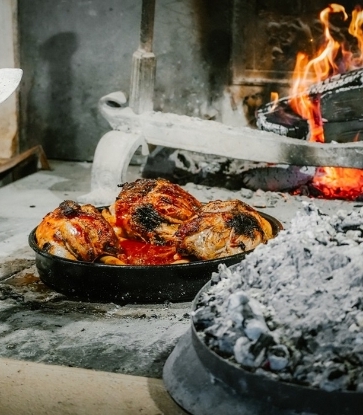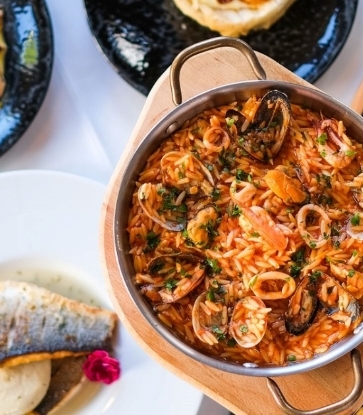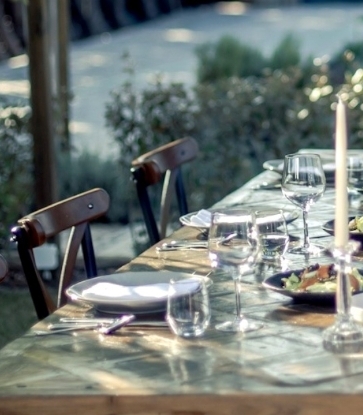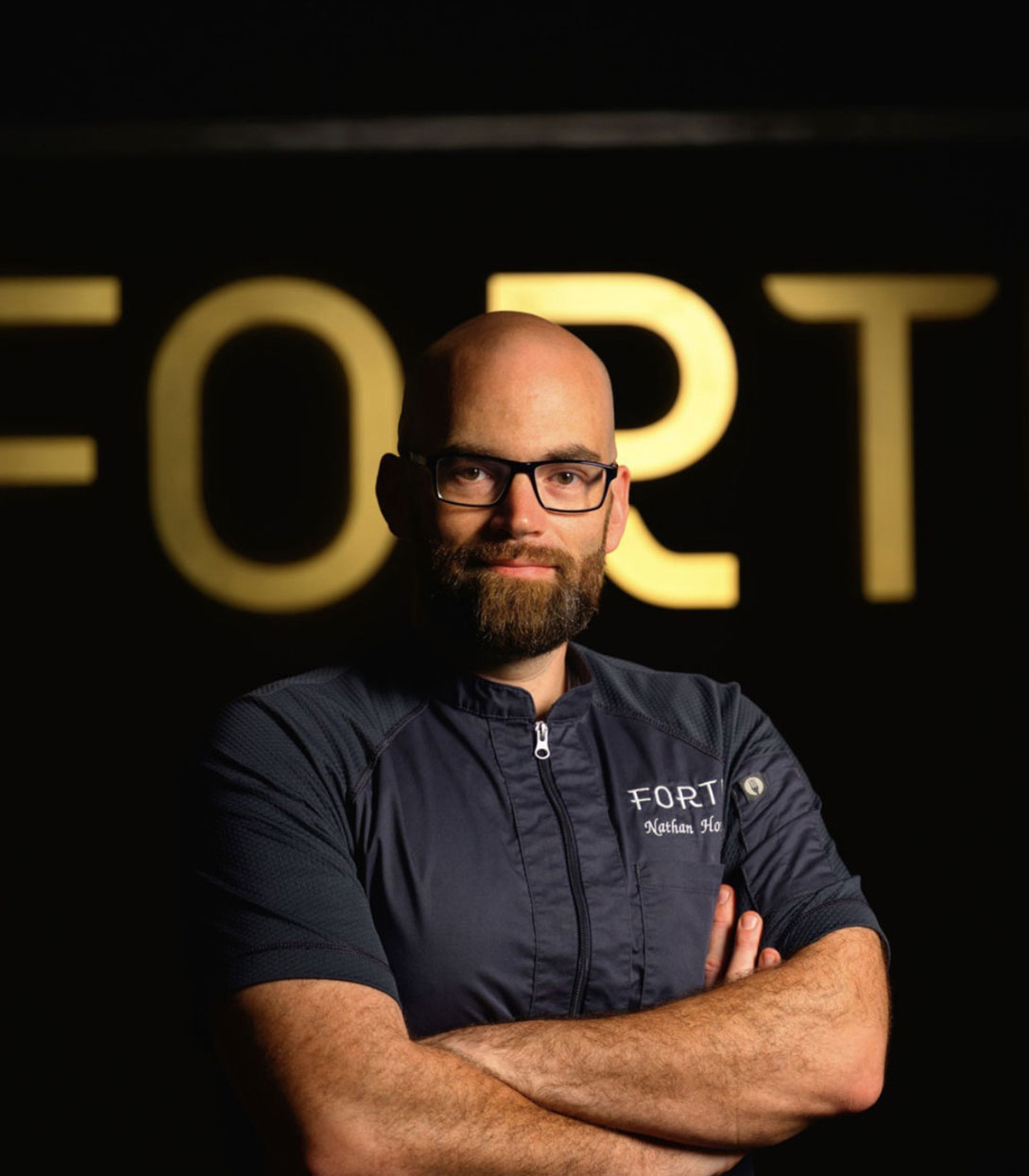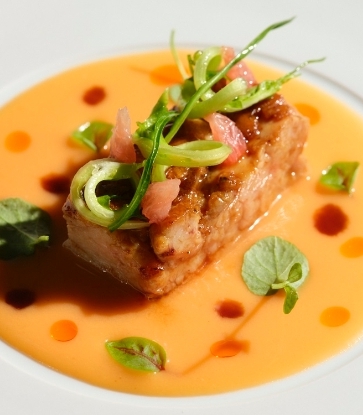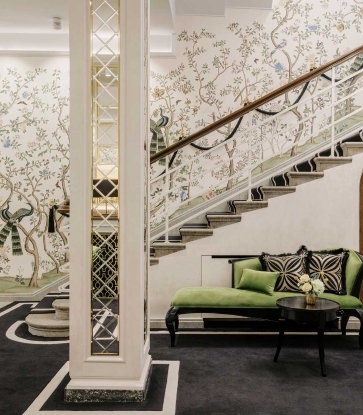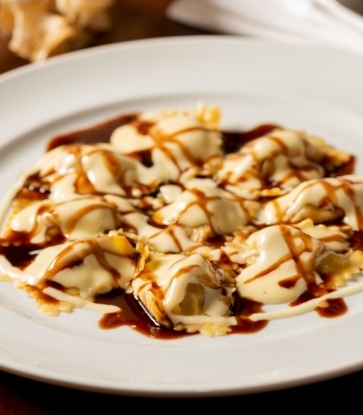Walking along the brief ascending road that leads to the heart of the place, you’re immediately struck by both the panorama of the surrounding hills and the stone-built dwellings. After all, Štanjel rises in the Slovenian Karst, and here the Karst reveals its essence to both sight and palate. In a rocky territory where man has always lived, people have chosen to build their homes using karst stone, which is a fundamental visual element of this land.
Built in terraces, Štanjel is one of the oldest settlements of the Karst and is characterized not only by its medieval castle and defensive towers, but also by the Church of St. Daniel with its lemon-shaped bell tower, the streets that preserve the oldest karst houses, and the Ferrari Garden, an exceptional cultural monument conceived between the wars by architect Maks Fabiani, who profoundly restructured the medieval village. Within the garden lies a remarkable (for its time) water supply system.
Today Štanjel has become an important cultural center of the Karst with numerous galleries, museum installations, cultural events, and shops that keep alive the ancient soul of the place.
This is the setting for the Štanjel Grad Restaurant & Lounge Bar, managed by the Komel family. The restaurant, which also offers a service in the large external courtyard and, in winter, in a dedicated room, is located within the castle: pastel tones, background music, an incredible panorama of the surrounding territory, warm colors, elegance in service guided by Gaja Komel, attention to detail. This, in essence, describes a location that brings to the table the best of karst cuisine, capitalizing on local producers, updating traditional recipes, and respecting the gastronomic culture of the place.

“My cuisine,” explains Simo Komel, a chef with a refined touch, “is an expression of the territory, what our grandparents could already eat, and is part of local culture. The Karst is connected to the sea by tradition: that’s why I offer both seafood and land dishes here, sometimes even combining them, but without creating separate menus because, in my view, they represent a single narrative of these places.”
The menu at Štanjel follows the path of the seasons and territoriality, of the daily market, and for this reason changes constantly, except for the welcome. That small glass of Gregor Lisjak’s olive oil served with Piran salt and an olive: “At one time,” continues Komel, who works alongside his wife and daughters, “there were also many olive trees in this area, and for about the last fifteen years their cultivation has been recovering: that’s why the welcome we give our clients is with oil; by placing the oil at the center of the plate, like a course, it is a way of giving it importance and making it an integral part of the tasting experience.”

An experience that, as we said, ranges from sea fish such as turbot, sea bass (from Fonda), gilt-head bream, shrimp, scampi from the Adriatic, to meat that, depending on the season, ranges from beef and veal in spring and summer, to game in the colder months (wild boar, venison, pheasant, wild rabbit) down to pork. Thus are served dishes such as Venison Fillet with onion purée and forest fruits, Mosaic of Pork Neck with vegetable charcoal wrapped in pancetta and fried with a crumble of dehydrated pork skin then served on celery root purée and red beet foam, or Ravioli filled with chicken stomach on one cream of milk and garlic and another one of parsley.
But on the table there is also the bread of Pedja Kostić from Trieste, Zidarič’s Jamar cow cheese (an ingredient of eggplant with tomato), the Gin from the Slovenian distillery Brin served with a Terrano sorbet (another pride of the territory), wine that also accompanies the dessert based on Pear cooked in its own liquor and served with pear gelato, cinnamon crumble, raisins in Terrano liqueur, and caramelized walnuts. The Creamy Corn Soup with ginger, roasted red pepper, house-made sour cream, and polenta chips is emblematic of the territory and of a tradition that remains alive and authentic, as is the Q Komel prosciutto produced in the family’s curing facility.

“We decided to take over the business of an old local curing facility,” Komel explains, “when I was working in consulting in the restaurant world after my experience as owner of a pizzeria near Nova Gorica. After all, my grandfather, in the Vipava Valley, was a skilled butcher who helped neighbors slaughter pigs in the winter months, and cured hams left to dry and age were never lacking in our houses. Today we produce about one hundred raw prosciuttos a year, as well as salami and pancetta: we are focused on the needs of our restaurant, we sell to a few customers but we don’t want to expand too much in this sector because doing things well takes time and dedication, and by putting too many things on the fire you make mistakes.Our prosciuttos are of excellent quality, we let them be preserved in average between two and four years, and they are always present on the Štanjel menu as off-menu offerings: today we propose one aged 81 months, the oldest ever made and among the best ever.”
A self-taught chef closely tied to Italian cuisine and its cooks (above all Emanuele Scarello of Agli Amici in Udine), Komel also manages the wine shop of Italian and Slovenian karst wines that is within the castle.

Hero image: Grad Štanjel Restaurant & Lounge Bar





